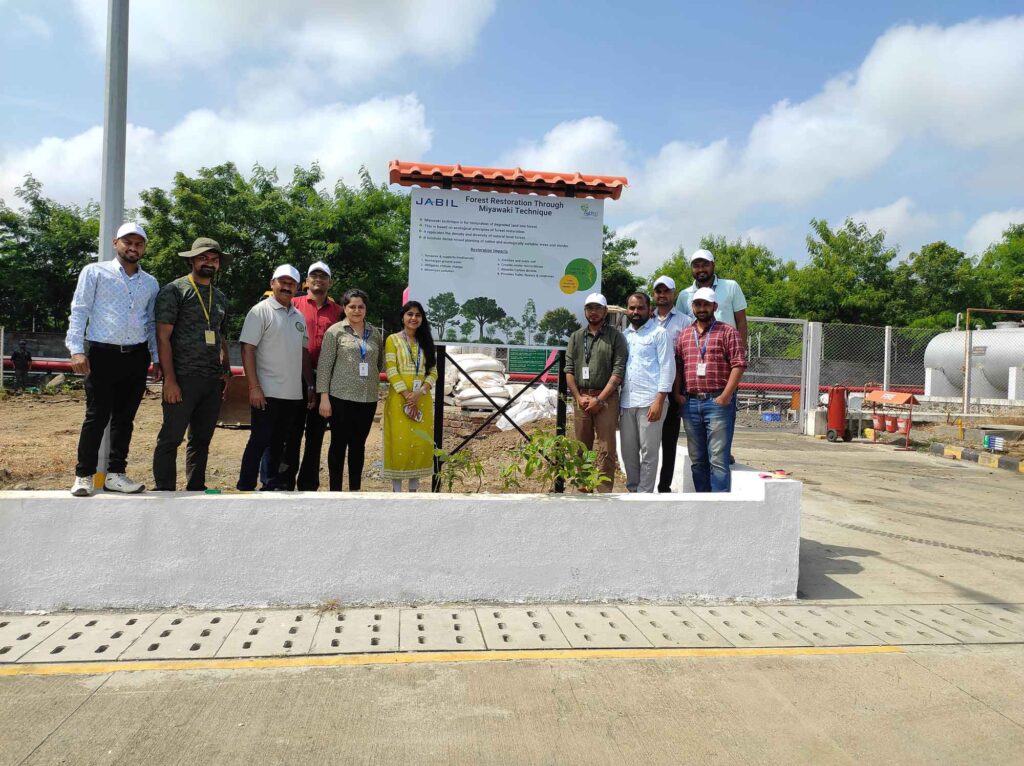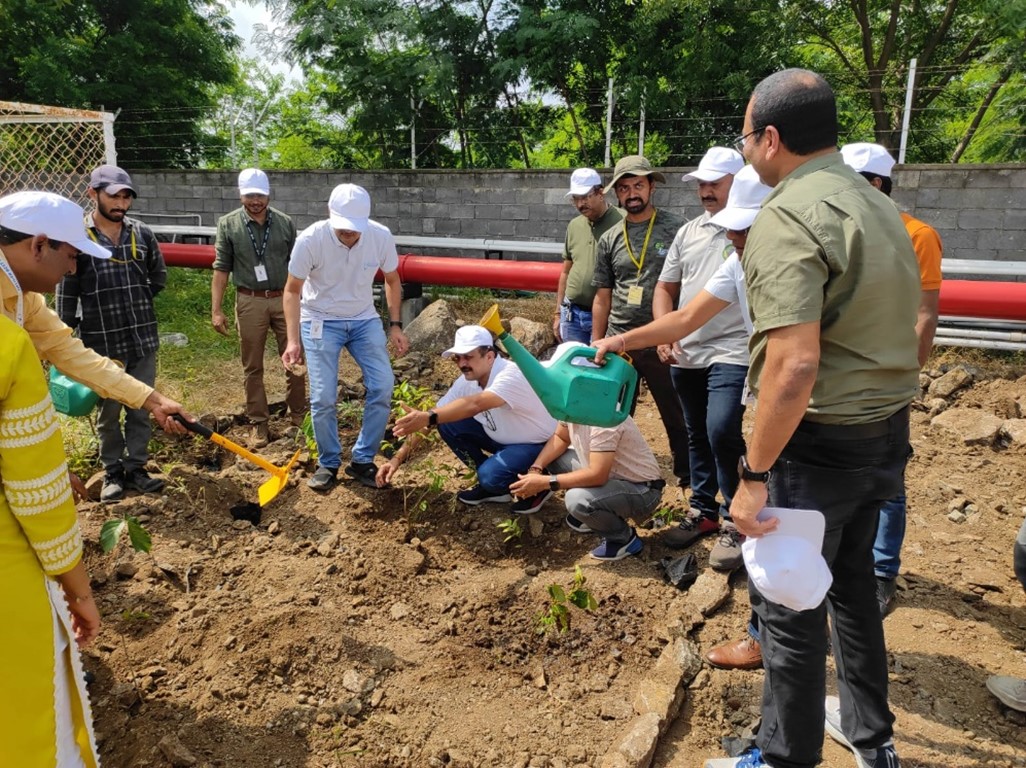
Project Background:
Jabil plant is at Ranjangaon MIDC, Pune. The factory campus is about 22 Acres. The company envisioned the forest restoration in their campus area. Forest restoration in 500 sq m area was carried out with Miyawaki forest restoration technique.
Restoration was planned with the vision of restoration of forest, soil and biodiversity.
Small green pockets in urban areas and in industrial set up are crucial to support biodiversity. Such small forests act as stepping-stones for bees, birds and other wildlife. Forest restoration is an impactful nature-based initiative in the wake of climate change.
Project Details:
The company campus has few open spaces out of which three were selected for restoration of forest. Forest restoration was carried out in a total of 500 sq m area. For restoration 1100 trees of 120 native, ecologically suitable tree species were selected.
Details of selected areas are-
Forest restoration with 500 trees
Forest restoration with 150 trees
Forest restoration with 450 trees
Miyawaki Forest restoration technique:
Miyawaki forest restoration technique is for restoration of degraded land and land devoid of vegetation. After studying and surveying local forest vegetation, native local plant species gets selected for forest restoration. In forest growing technique multi layered forest is created with canopy trees, large trees, medium tree, small trees, shrubs, and climbers. For forest restoration selection of trees is crucial. Forest with diverse species is more resistant to pests and diseases than trees in less diverse, species-poor forests.
Miyawaki Technique advocates replication of local natural forest in density and diversity of species. It supports dense mixed plantation to match natural forest systems. As the tree species are selected from local natural forests, the original ecosystem, quickly get restored. The technique works on restoring and revival the whole ecosystem.

Process of Forest restoration
1. Soil collection was done to determine soil fertility, nutrient deficiencies, and potential toxicities.

2. Land marking was done

3. Land preparation was carried out with the help of excavator.

4. Compost, moisture retainer and nutrient mixture containing beneficial microbes was added to the soil.

5. Plant placement in prepared areas and planted

6. Saplings was provided support by bamboo.

7. Whole Miyawaki forest area was covered with thick hay (process of mulching).
Mulching helps in-

8. Drip and automation System was installed for watering. Treated water from the factory will be used for watering the forest.

9. Employees of Jabil participated in planting drive with enthusiasm.

Site Photos as on March 2025



connect@forrest-india.org
Copyright © 2022 forrest-ecology